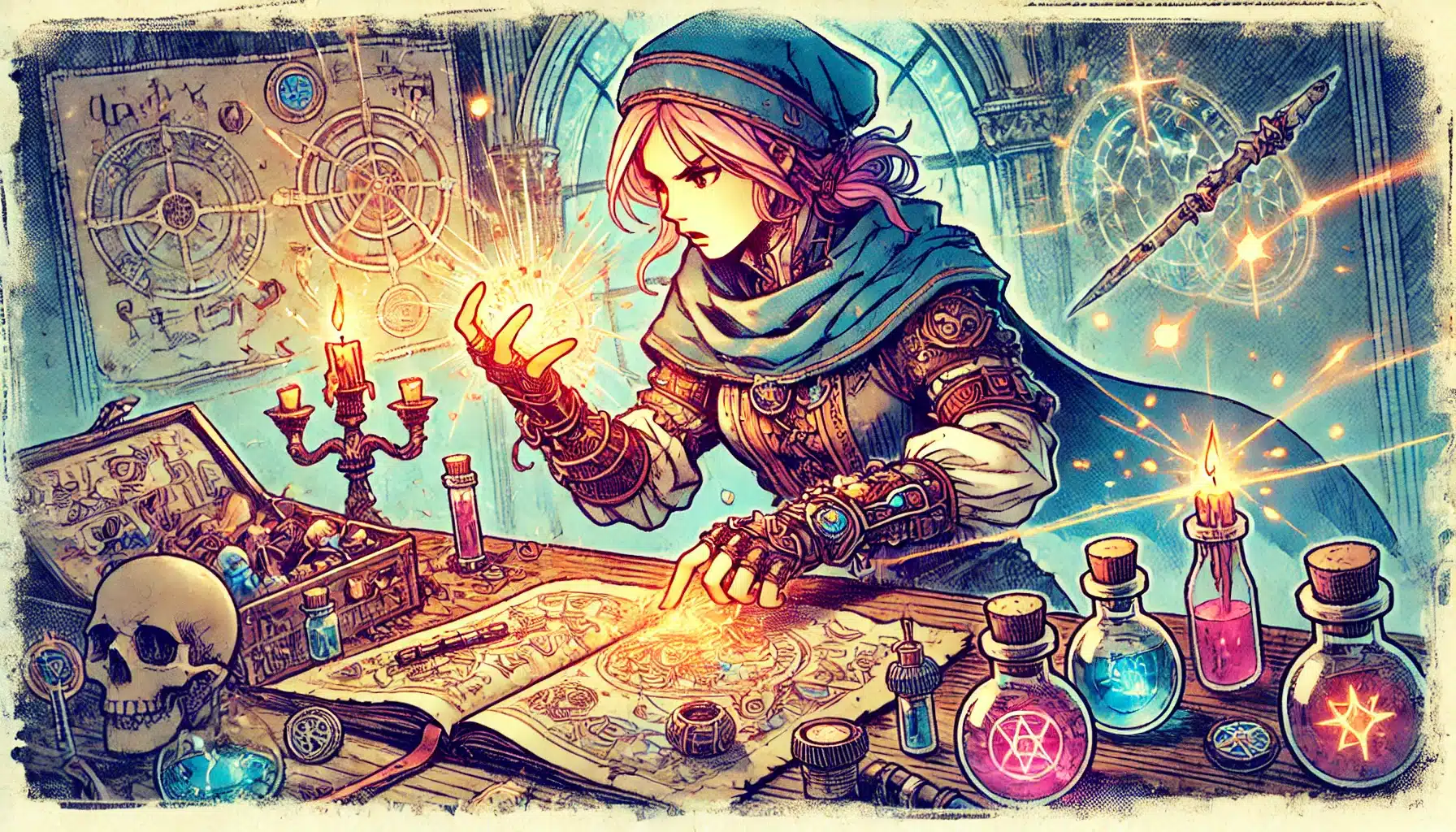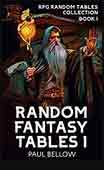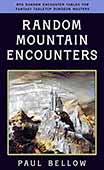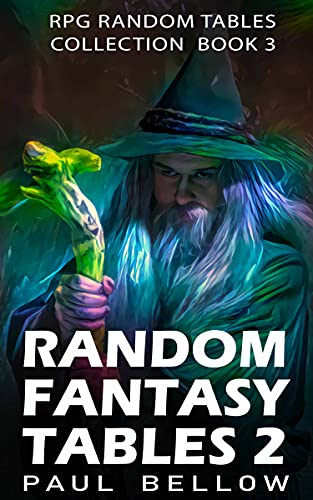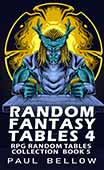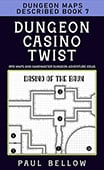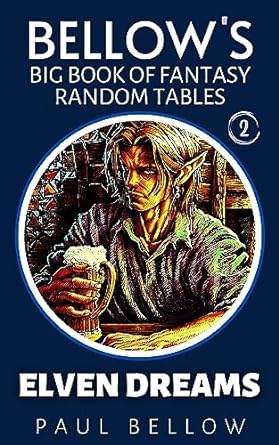In the annals of Dungeons & Dragons, crafting magic items has long dwelled on the fringes—a whispered possibility, a vestige from earlier editions that most tables ignored or handled with broad DM fiat. It was a tool for the rare Artificer or obsessed Wizard, a bit of exotic flavor rather than a pillar of play. But as the 2024 revision of the Dungeon Master’s Guide approaches, Wizards of the Coast has twisted the alchemical dial: crafting is no longer tucked away on a few elective pages. Instead, it’s leaping into the spotlight, where player creativity, agency, and ingenuity can set the stage for legendary fantasy invention.
This new era places the hammer, quill, and enchanted tongs directly in the adventurer’s hands. Imagine players not only stumbling across lost relics in dragon hoards but meticulously forging the artifacts they envision—from battle-tested runeblades to trickster’s cloaks, bespoke to their character’s journey. Mass production, customization, and the chance to pepper the world with one’s own mark are no longer the purview of NPCs and wishful sidebars. The act of creation is fully, fragrantly alive.
Why this dramatic shift? The design intent is crystalline: enrich player agency, add mechanical depth, and open narrative personalization in every tier of play. With item crafting, players become more than just wielders of power, but shapers of it—infusing their artifacts with myth, memory, and mechanical nuance. No longer must a character passively receive rewards; they can plan, gather, risk, build, and invest, tying their story to every gem-studded hilt or glimmering circlet they produce.
But magic isn’t conjured from thin air—this system threads crafting tightly into familiar mechanics. Arcana checks, tool proficiencies, and the new Bastion home base rules all come to bear. The rules don’t just ask who can craft, but how, where, and with what mastery. Succeeding at magical invention demands a blend of knowledge, resources, and time—a far cry from mere gold-dumping.
Still, the 2024 DMG tethers agency to accountability. Crafting isn’t a creative free-for-all. DMs retain the right to gatekeep, throttle, or story-sync what comes out of the forge. Campaign context, logistical hurdles, and the winds of fate mean that not every vision will see daylight. The handbook offers a dynamic new system, but the Dungeon Master remains its guardian and guide.
Ready to chisel new tales into your campaign’s mythic bedrock? Let’s peel back the parchment and step into the crucible—the rules, the risks, and the roleplaying riches of magic item crafting in D&D’s newest age.
- Core Mechanics of Magic Item Crafting
- Skill and Tool Requirements
- Spell Knowledge and Magic Integration
- Time, Gold, and Scaling with Rarity
- Materials and Resource Availability
- The Role of DM Permission
- Magic Item Customization Features
- Using Bastions to Enhance Crafting
- Crafting Limitations and What Can’t Be Made
- Campaign Integration and Narrative Hooks
- Final Thoughts on Magic Item Crafting in 2024
Core Mechanics of Magic Item Crafting
At its heart, crafting a magic item in DnD 2024 is a layered and intricate undertaking—a blend of character expertise, tangible resources, patience, and story-driven intent. The process does not unravel with a single check or the emptying of a coin pouch, but flowers through a series of well-defined steps. Each stage is a small adventure: set your sights, marshal your resources, and discover the alchemy of creation.
Try my AI Tabletop RPG generators...and an extensive library of content!
To begin, a player must first meet the criteria of crafting ability. These rules echo, but expand upon, the familiar patterns established for scrolls and potions in earlier editions. While those simpler magics might require a single proficiency or spell, true item crafting involves greater commitment—think of it as an artisanal path, not merely a transaction.
The creation itself unfolds in distinct phases: gathering or purchasing materials, preparing blueprints (often magical or ancient in origin), executing skill checks with both tools and magical knowledge, and finally weaving, hammering, or enchanting the item during dedicated stretches of downtime. The experience, far from rote, is built to invite cooperation—perhaps a wizard, cleric, and bard pooling talents, or an entire adventuring party questing for missing ingredients.
Moreover, crafting is intimately tied to the campaign’s rhythm. Downtime rules shape the passage of weeks or months, while the brand-new Bastion system introduces home workshops, arcane laboratories, and team-built facilities that supercharge production. Creating magic now becomes as much about the flow of campaign time as the snap of dice.
⚔️ Fantasy RPG Random Tables Books
Make life as a Gamemaster easier…
If you play Dungeons & Dragons, Pathfinder, or other fantasy RPGs, this
RPG random tables series
is packed with encounters, NPCs, treasure, and more. Available in eBook or print—either way, you’ll have a wealth of adventure ideas at your fingertips.
The process, while systematic, is not without hurdles. DM oversight persists at every step, from item approval to mitigating complications. Whether you’re seeking to mass-produce +1 swords for your local militia or infuse a ring with never-before-seen resistance, collaboration between player dream and DM practicality is expected, even necessary. The spirit here is one of invitation and negotiation—true to the best traditions of tabletop roleplaying.
Skill and Tool Requirements
No mere hedge wizard or coin-flush fighter can simply whip up an enchanted trinket out of raw ambition. The DnD 2024 crafting rules demand that a character possess both proficiency in Arcana and mastery with the specific tools suited to an item’s nature—arcane theory hand-in-hand with tactile craft. It’s a twin-key system: knowledge opens one lock, technique the other.
This requirement elevates crafting beyond gold, keeping it out of reach for those who haven’t honed the right skills. To forge a blade of power, you’ll need more than a heavy purse; you’ll need the steady hands of a blacksmith and the scholarly mind of a sage. Wizards, Artificers, and Bards—those with magic in their bones—naturally slide into these roles earlier, while Fighters and Barbarians may find themselves bartering favors, seeking tutors, or dedicating their downtime to the grueling (and gratifying) pursuit of tool proficiency.
Different magic item types call for unique tool sets, mapping craftsmanship in the game world to tangible abilities:
- Enchanted Sword – smith’s tools
- Arcane Rod – woodcarver’s tools
- Boots of Speed – cobbler’s tools
- Cloak of Displacement – weaver’s tools
- Potion of Healing – alchemist’s supplies
- Amulet of Proof Against Detection – jeweler’s tools
- Shield of Expression – mason’s tools
- Wand of Web – woodcarver’s tools
- Goggles of Night – tinker’s tools
- Bag of Holding – leatherworker’s tools
- Winged Boots – cobbler’s tools
- Helm of Telepathy – smith’s tools
- Ring of Evasion – jeweler’s tools
- Belt of Hill Giant Strength – leatherworker’s tools
- Robe of Stars – weaver’s tools
This synergy between magic class, tool mastery, and ambitious invention is fertile ground for multiclassing or downtime planning. A sorcerer with a flair for tailoring might hope to one day weave the perfect magical garb, while a seasoned bard trained by a jeweler envisions a suite of enchanted rings for the entire party.
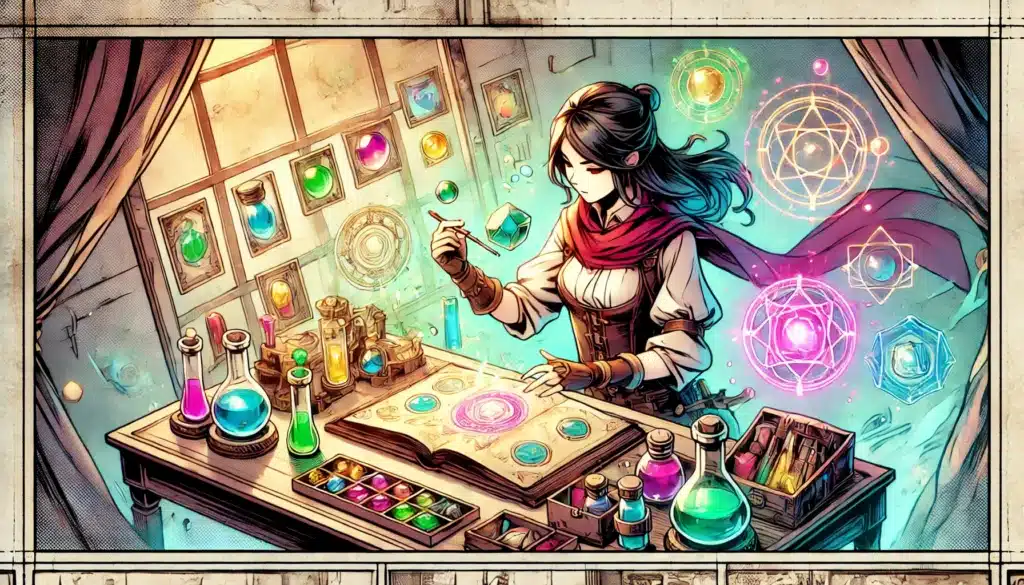
Spell Knowledge and Magic Integration
For many arcane items, theory isn’t enough—the creator must know, or at least be able to cast, the spell that forms the item’s beating heart. This requirement forms a natural barrier, ensuring that the arc of character power and the progression of magical gear remain tightly wound.
A simple scroll of Fireball? Its crafter must have the spell scribed in their repertoire. A Ring of Invisibility? Only one fluent in the Invisibility spell can channel it into metal. These requirements block early-game shenanigans—no 3rd-level artificers mass-producing wands of Resurrection. The design speaks to a careful balance, binding item potency to experience, magical growth, and earned access.
This adds a delicious layer of strategic planning for players: securing a spell might involve tracking down ancient tomes, appeasing a cantankerous archmage, or dabbling in multiclassing to pick up just the right trick. Feats like Ritual Caster, Magic Initiate, or the new rules for acquiring spells through Bastion downtime open even more doors for the savvy, collaborative party.
In play, this leads to inspired builds and character arcs. The wizard obsessed with Misty Step might one day craft boots that whisk their wearer across the battlefield in a shimmer of smoke. The bard, desperate for healing, learns Cure Wounds simply to bottle its magic for future emergencies. These mechanics deepen motivation—spells become more than battleground tools, but foundational components of legendary inventions.
Time, Gold, and Scaling with Rarity
Magic item crafting respects the laws of scale—wondrous gear demands more from its creator. The rare and the mighty are never churned out overnight. In DnD 2024, both time investment and gold cost increase with item rarity, creating friction that rewards long-term planning and steers campaigns away from runaway item bloat.
The time requirement ensures that no party floods the armory with Very Rare or Legendary items before such treasures fit the story. Common items might take a mere tenday to finish, while something truly world-shaking could tie up a wizard for months. Downtime becomes precious—and for groups employing the Bastion system, dedicated facilities can shave days or weeks off the clock, letting crafty characters leverage their investment in home bases.
Gold, too, is no mere tally from plundered purses. While the rules provide base costs, the DMG encourages material specificity. Creating a Staff of Frost might require a diamond etched with runes, rare frostwood, and vials of elemental essence—not just a fat sack of coins. This anchors items in the world, ensuring every creation quest is as much story as spreadsheet.
⚔️ Fantasy RPG Random Tables Books
Make life as a Gamemaster easier…
If you play Dungeons & Dragons, Pathfinder, or other fantasy RPGs, this
RPG random tables series
is packed with encounters, NPCs, treasure, and more. Available in eBook or print—either way, you’ll have a wealth of adventure ideas at your fingertips.
To clarify, here’s a suggested crafting progression:
| Rarity | Crafting Time | Base Gold Cost | Minimum Level |
|---|---|---|---|
| Common | 5 days | 100 gp | 3rd |
| Uncommon | 10 days | 500 gp | 5th |
| Rare | 25 days | 5,000 gp | 9th |
| Very Rare | 50 days | 25,000 gp | 13th |
| Legendary | 100 days | 100,000 gp | 17th |
| Artifact | Untold years* | Priceless | DM Fiat |
*Artifacts are uncraftable—see section below for details.
These guardrails foster narrative pacing. Gaining a Cloak of Displacement at 5th level is a thrill; mass-producing +3 weapons by 9th is not the intention. Crafters must reckon with both economics and the inevitable passage of time.

Materials and Resource Availability
While gold values provide scaffolding, the true essence of magic item crafting lies in the gathering—chasing down the rare, the lost, and the lethal. Think of Eye of Vecna-style quests in miniature: every ingredient is a story seed for DM and player alike.
Certain materials are readily available in bustling cities, wizard’s markets, or through black-market deals. Others demand grit: braving the lair of a slain enemy, bartering with fey spirits, or spelunking for ether-touched ore. The nature of your campaign colors availability—urban campaigns breed convenience, while frontier games turn every ingredient into a mini-arc.
DMs should seize this opportunity. Let the search for a moon-touched pearl, the fang of a fiend, or a branch from a treant’s heartwood become more than an errand—make it an odyssey. Successful crafting is all the sweeter when the materials are earned, not bought.
Flavorful example components by item type:
- Dragon bone (weapons)
- Ghost essence (wands)
- Volcanic obsidian (amulets)
- Treant heartwood (staffs)
- Fiend ichor (cloaks)
- Shadow silk (robes)
- Thunderbird feather (boots)
- Siren pearl (rings)
- Frost giant beard hair (belts)
- Elysian silver (shields)
- Basilisk scale (armor)
- Enchanted coral (helmets)
- Night hag bone (rods)
- Sun-drop amber (potions)
Each component offers a hook—sometimes a quest, sometimes a moral dilemma, sometimes a bargaining chip the players didn’t know they’d need.
The Role of DM Permission
With all this power comes the bulwark of DM permission. No matter how intricate the system, the final say on what can be crafted, when, and at what price stays firmly with the Dungeon Master. This oversight shields campaign themes and pacing, ensuring that the floodgates open only as wide as the story demands.
DMs may ban specific items, reroute timelines, or require additional quests and risks before allowing truly potent gear into play. Unattainable items, rare blueprints, or unpredictable outcomes (botched enchanting, wild side effects) keep the world mysterious. The boundaries empower, not restrict—by making victory earned, each crafted prize feels hard-won and personal.
Ultimately, this is a partnership. The DM should act as mentor, not adversary, offering challenges that heighten the value of creation while guarding the rich internal logic of the campaign world.
Magic Item Customization Features
Perhaps the most dazzling addition in 2024 is the flexibility of customizing crafted items. This is not just about stat blocks—it’s about culture, history, and legacy rendered in tangible form. DMs and players are encouraged (and mechanics support) infusing every item with the essence of its creator, their homeland, or a pivotal story event.
This customization isn’t “just for flavor.” Items may mark allegiance to a deity, symbolize a lost family, or commemorate a world-shaking victory. Beyond making it easier to tell who crafted what, these traits anchor items in the living world, inviting DMs to weave plots and hooks around their significance.
Personalization also deepens investment. When your sword is not merely a +1 longsword but Ashfang, Hammer of Lost Kin, it becomes a touchstone for the entire table. The act of crafting becomes a declaration of your character’s identity—one that grows and taunts you with new possibilities as the campaign unfolds.
Try my AI Tabletop RPG generators...and an extensive library of content!
Strong custom features also open the door for minor mechanical tweaks, unique resistances, or story-driven benefits—each echoing the specifics of your character’s journey.
Naming and Thematic Identity
The first act of a true creator is naming. Players are invited, even pushed, to craft names that matter. Leave behind the staid “Longsword, +1.” Call forth the poetic, the mythic, the chilling—names that will ring through campfire tales and courtly intrigue alike.
Perhaps your staff is not a Staff of the Python, but Serpent’s Promise, Grown from the Midnight Yew. Perhaps you coin a ring’s name from a tragic backstory: The Watcher’s Mantle, “so you may stand vigil with me yet.” Or you name a humble dagger Thorn of the Vow, sealing a pact of vengeance or love. These names can be as gaudy or cryptic as your character’s heart.
Encourage your table (and your DM) to recognize such items for what they are—pieces of a living myth, destined to be sung, stolen, or mourned long after your adventures end.
Visual and Cultural Touches
The bones of a magic item are its function. Its flesh, its face, its legend—all these flow from its physical description. The 2024 rules explicitly support tailored appearances, marking every item as a unique product of its forge.
A halfling bow might be strung with festival ribbons, its grip wound with wool from home. A dwarven axe is a miniature tapestry of ancestral runes, each runnel a story of fire, stone, and battle-sweat. Even the humblest lamp can glow with the soft light of a distant summer, stamped with motifs that reflect the creator’s soul.
Players and DMs are urged to think of local woods, regional motifs, traditional crafts—even the scent of the forge or the echo of a prayer as a character embarks on their act of creation.
Minor Properties
Magic items can whisper secrets or hum with subtle power. At DM discretion, crafted items may be granted a minor property—small, evocative touches that set it apart from mass-produced gear. Sometimes these are mechanical (granting advantage on a rare save or acting as a magical focus); often, they’re narrative—tiny pleasures or curiosities.
For the craft-happy player, a minor property is icing on the cake, a signature denoting cleverness, story, or destiny. Consider them the magical world’s equivalent of “Easter eggs,” encouraging imagination in both design and play.
Examples of minor properties:
- Item floats in water
- Shines brightly during sunrise
- Whispers a single word when drawn
- Remains warm to the touch, even in snow
- Repels mundane insects
- Functions as a magical compass for its creator
- Binds to its bearer with invisible thread (returns when lost within a mile)
- Vividly colors the air around it (harmless smoke or sparkles)
- Hums a favorite childhood tune
- Emits a soft breeze on command
- Can store a single written message for 24 hours
- Repels simple curses or hexes
- Casts intricate shadows in lamp-light
Each is an invitation to play—whether divining direction in a dungeon or staving off a swarm of bloodthirsty mosquitoes.
Item Quirks
Quirks add that odd twist—those little behaviors that turn a blade, cloak, or tome into a true character in your campaign. Sometimes helpful, sometimes hilarious, sometimes a cause for concern, quirks are rolled or chosen, playing into the world’s weirdness and the unpredictability of magic.
The beauty of quirks lies in their unpredictability. Maybe your cloak drips brackish water on full moons, drawing the ire of innkeepers everywhere. Or perhaps your enchanted arrow calls out, “Again!” every time it strikes home. Quirks spark story hooks and table jokes, stoking the fires of legend.
Favorite quirky item behaviors:
- Cries out in pain when damaged
- Declares a random riddle in Draconic at dawn
- Sheds feathers at inopportune times
- Constantly drips brine
- Glows in the presence of lies spoken aloud
- Conjures spectral moths when its magic activates
- Warms intensely when enemies are near
- Shudders when handed to a stranger
- Sings a lullaby only children can hear
- Emits harmless sparks when jealousy is felt
- Insists on being cleaned weekly, or it refuses to work
- Speaks one word in Infernal daily, regardless of audience
These quirks not only deepen immersion and entertainment—they often offer just the hint of drama or predicament a scene needs.
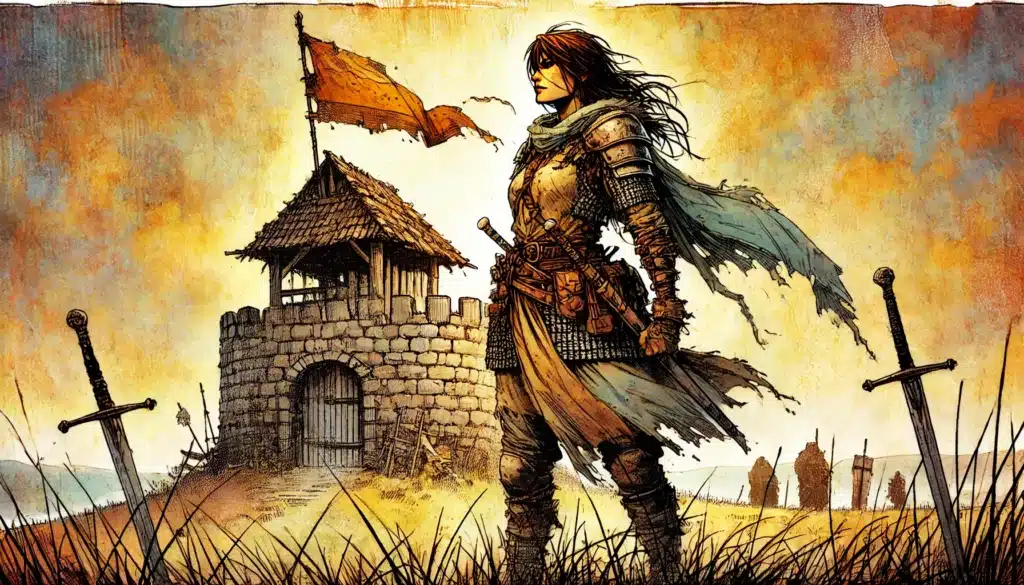
Using Bastions to Enhance Crafting
The Bastion system, an eagerly anticipated addition to the 2024 DMG, now meshes directly with magical item creation. Bastions are more than houses; they’re a progression path for downtime, ultimately becoming guildhalls, laboratories, or temples, humming with arcane and creative potential. Crafting isn’t just a solo pursuit—you can build a home, a workshop, even an institution around it.
Different Bastion upgrades enable, accelerate, or enhance the crafting process. Having access to an Arcane Study might cut crafting time in half for Uncommon items. A dedicated Greenhouse grows elusive potion components. A Laboratory unlocks potent alchemical concoctions, while a Reliquary draws divine magic for holy relics.
Players who invest in Bastion upgrades find their downtime blooming with potential—not only can they craft more efficiently, but their creations can take on characteristics unique to their facilities. Perhaps items forged in a moonlit shrine bear a holy radiance, while those from a volcano-side forge blaze with an inner light.
⚔️ Fantasy RPG Random Tables Books
Make life as a Gamemaster easier…
If you play Dungeons & Dragons, Pathfinder, or other fantasy RPGs, this
RPG random tables series
is packed with encounters, NPCs, treasure, and more. Available in eBook or print—either way, you’ll have a wealth of adventure ideas at your fingertips.
Here are some Bastion facilities and bonuses:
- Arcane Study – speeds up enchantment, unlocks Uncommon/rare magical item creation
- Weapon Forge – enhances magical weapon output, allows for unique properties
- Alchemist’s Lab – enables complex potion crafting, improves chances for rare effects
- Greenhouse – supplies rare herbs for potion and poison creation
- Reliquary – channel divine energy for sacred relics and holy symbols
- Observatory – boosts scroll writing, offers astrological infusions
- Gemcutter’s Atelier – produces rare gem components for jewelry
- Tinker’s Workshop – supports device, clockwork, or mechanical item crafting
- Library – speeds up research, helps discover or copy ancient blueprints
- Summoning Circle – binds planar energies for unusual or extraplanar items
- Sanctified Chapel – grants nightly blessings to creations, weakens curses
- Enchanting Pool – imbues items with minor resistances
These facilities turn a Bastion from a narrative backdrop into a living part of the crafting system—a springboard for group projects and personal legacy both.
Strategic Considerations in Bastion Building
Savvy adventurers will tailor their Bastions to specific crafting ambitions. A bard with dreams of enchanted musical instruments will want a Luthier’s Nook or a soundproof studio; an elven alchemist will crave a Greenhouse perched among the treetops. This system rewards thinking several moves ahead, anticipating not just what you want to create now, but what sort of legend you hope to found in the future.
Importantly, groups can collaborate—forming joint Bastions or linking their facilities for maximum benefit. A wizard’s Arcane Study might supply resources to the fighter’s Forge, creating a miniature economy of expertise within the party. Downtime becomes thrilling, cooperative, and impactful, with every player able to leave a mark on the campaign’s infrastructure.
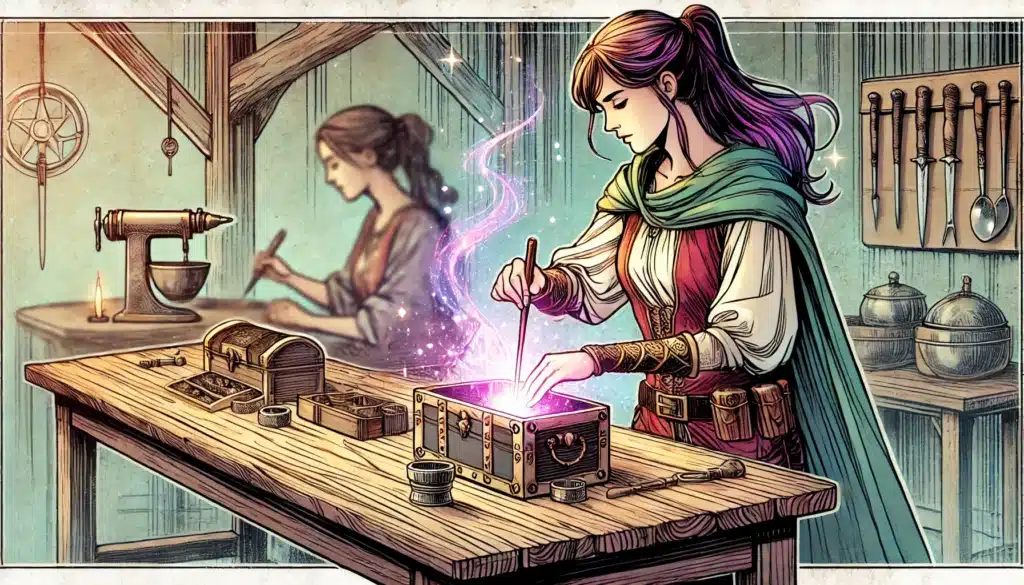
Crafting Limitations and What Can’t Be Made
The rules would be brittle if they allowed anything and everything. Some treasures, by design, lie forever out of mortal hands. The 2024 crafting system draws a clean line: Artifacts—the Hand of Vecna, the Sword of Kas, those items with histories longer than empires—cannot be crafted, only found (or, for most, merely chased).
This preserves the mystique, narrative gravity, and awe of legendary artifacts. Their power reshapes the world; their origins are mysteries for entire campaigns. Letting players simply build them would flatten centuries of lore and set campaign balance on fire.
Examples of uncraftable artifacts:
- Hand of Vecna
- Eye of Vecna
- Wand of Orcus
- Blackrazor
- Sword of Kas
- Axe of the Dwarvish Lords
- Book of Exalted Deeds
- Book of Vile Darkness
- Orb of Dragonkind
- Deck of Many Things
- The Ring of Winter
- The Holy Avenger (in some settings)
- Crown of the Lich King
Let the quest to craft these serve as multi-campaign story arcs—campaign-defining, perilous, and, in all likelihood, tragic or unfinished.
Campaign Integration and Narrative Hooks
Savvy DMs will slyly introduce ancient blueprints, lost crafting techniques, or “shards” of artifact power as long-term campaign objectives. These might be pieced together over years of in-game time, woven into plotlines, or held as temptations that drive characters into darkness or greatness.
Even if the party never finishes a world-shaking item, their journey itself becomes legendary—tied to the ever-elusive art of creation, and all its heartbreaks and triumphs.
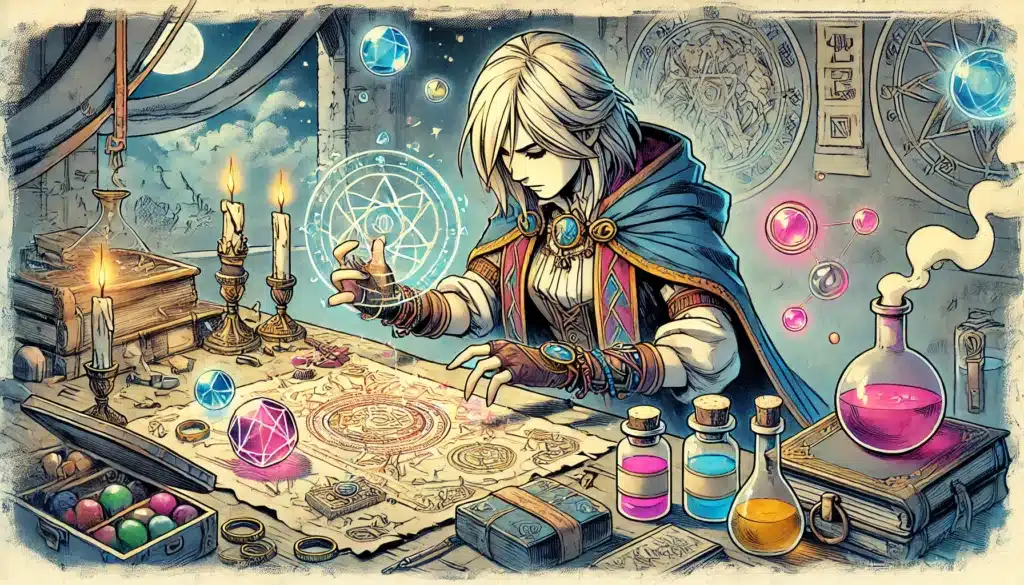
Final Thoughts on Magic Item Crafting in 2024
With these sweeping new rules, magic item crafting has finally stepped into the limelight—no longer a dusty sidebar, but a rich, living system. It’s a carefully calibrated engine for long-term planning, rewarding players who dream big, chase mastery, and root their creations in both mechanics and narrative.
Importantly, the system offers layered complexity without sacrificing table control. Players can now wield creativity, ambition, and cooperation to fashion iconic tools unique to their destiny, but always within boundaries that preserve adventure’s sense of risk and balance. The DM remains the weaver of the world, a willing accomplice to crafty plotters, never just a referee.
As you and your group navigate these waters, prioritize communication and shared vision. Align crafting ambitions with the campaign’s tone: a low-magic, gritty horror will challenge even the most turbocharged enchanter, while a high-fantasy saga might see a party’s Bastion become a beacon for pilgrims seeking legendary arms.
Remember that crafting is more than a process. It’s a roleplaying event, a vector for character and worldbuilding, an engine for downtime filled with drama, setbacks, and stunning triumphs. The legend isn’t just in what you wield, but how you forged it.
The next time you gaze at an artifact on your character sheet, understand: you hold not only power, but a story. A story born of labors, songs, obsessions, sacrifices, and wild invention. The 2024 system beckons you to reach farther, dig deeper, and craft not only items—but legends that echo forever in the worlds you create.

